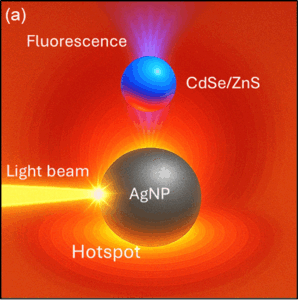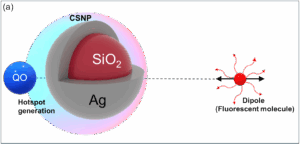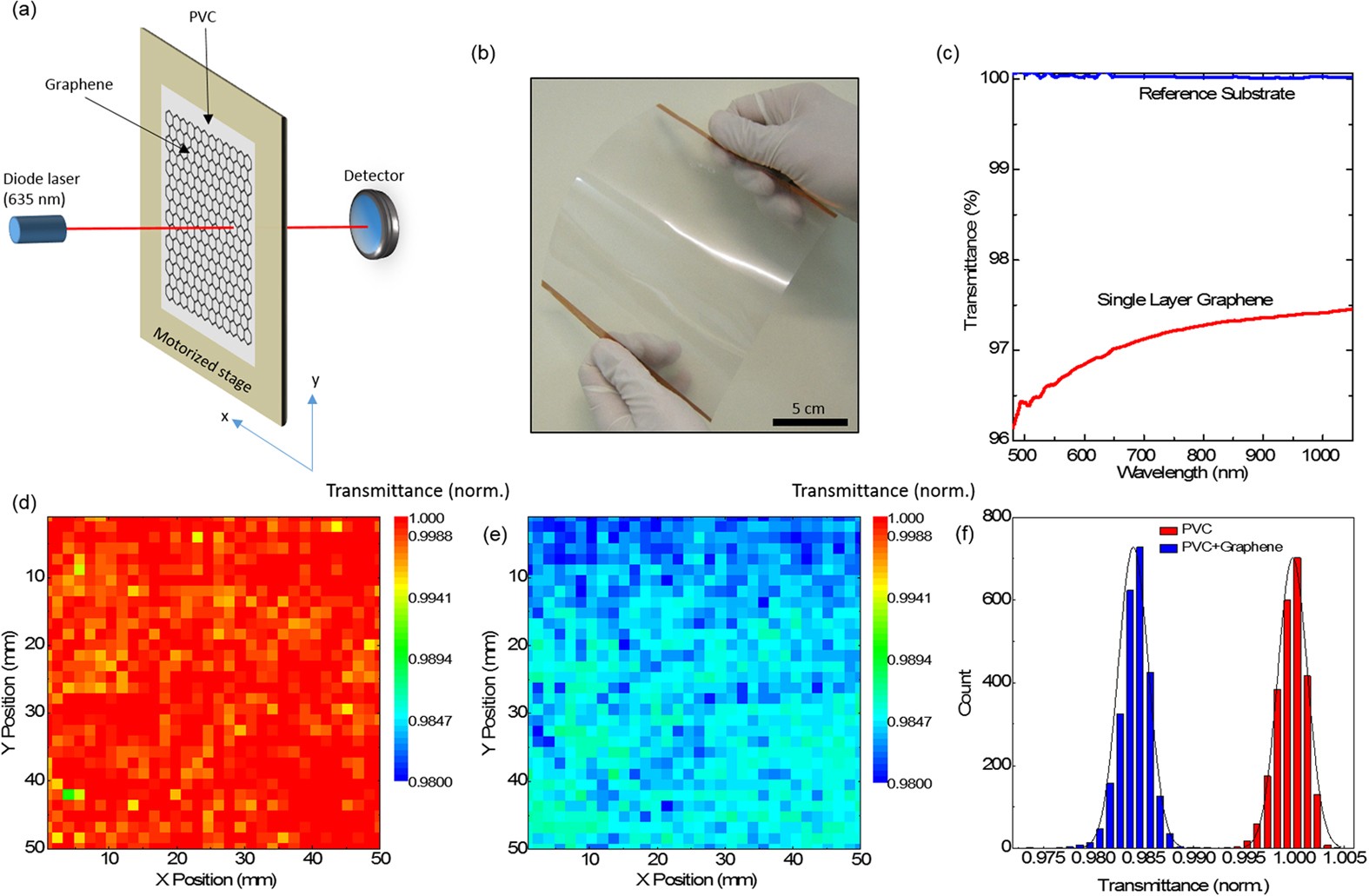We explore quantum behaviour in nanomaterials and implement them in humanitarian technologies.
Our Computational Research
Using finite difference time domain (FDTD) method, we numerically analyze light matter interactions between low dimensional materials and closely located plasmonic structures giving rise to quantum phenomena such as fluorescence enhancement, Förster Resonant Energy Transfer (FRET) and Fano Resonance.

Optically Switchable Fluorescence Enhancement at Critical Interparticle Distances
![Figure 1:
Micron-scale, voltage-tunable integrated entanglement device. Nonlinearity of the MNS is already extremely enhanced due to localization at the hotspot [41]. QE(s) positioned to the hotspot induces a Fano resonance which can suppress (turn off) the localization-enhanced nonlinearity by several orders at ωQE = 2ω or enhance it 10–100 times at around ωQE ≈ 2.002ω. Level-spacing (ωQE) is tuned by an applied voltage [26, 30], [31], [32], [33].
a
̂
in
${\hat{a}}_{\text{in}}$
is the input field (integrated laser),
a
̂
out
${\hat{a}}_{\text{out}}$
and
b
̂
out
${\hat{b}}_{\text{out}}$
are the output fields whose entanglement (Figure 4a) and non-classicality (Figure 4b) are investigated.](https://www.degruyterbrill.com/document/doi/10.1515/nanoph-2022-0555/asset/graphic/j_nanoph-2022-0555_fig_001.jpg)
On-demand continuous-variable quantum entanglement source for integrated circuits

Electrically Controllable Dipole Decay Rate
Our Experimental Research
By combining low-dimensional materials such as graphene and quantum dots, we implement on hybrid structures giving rise to supercapacitors, photodetectors and mechanically flexible sensors that are not possible solely by wafer based technologies.

Semitransparent Image Sensors for Eye-Tracking Applications

Flexible graphene photodetectors for wearable fitness monitoring

Synthesis of Large Area Graphene for High Performance in Flexible Optoelectronic Devices